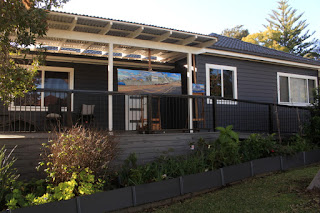Today's painting on the deck gallery is a portrait of MTT Daimler CGV6 112 at the Sydney Bus Museum in Leichhardt. It has been under restoration to operating condition since 2016.
 |
BUS11 Restoration of Daimler doubledecker 2017 oil on canvas 61 x 31cm |
It's had a rough life.
It was one of
15 Daimler doubledecker chassis ordered for use in Sydney. However they
were rejected because their 4.95m chassis didn't meet the required
specifications of 5,33m.
Then
they were sold to the Metropolitan Transport Service, Adelaide. The 54
seat bodies were then built in Granville, and driven overland to
Adelaide.
After being in service in Adelaide until 1960, no 112 was sold to a cattle station in the Coober Pedy area of South Australia.
In 1990 it was recovered for preservation - and driven over 1,000 miles back to Sydney!
It might have been too small, but it's tough!
I painted this on site in the Bus Museum at Leichhardt, and some of the volunteers are in the background.


























